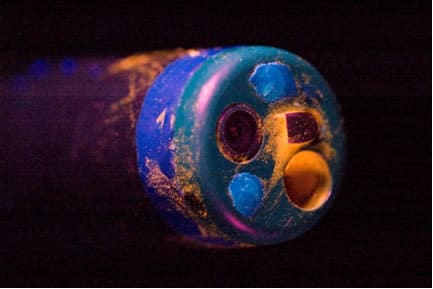
A biofilm is a complex aggregate of bacterias on a surface. The bacterias organize themselves in a colony. They stick together on the surface thanks to a viscous matrix made of polymers (lipids, polysaccharids, proteins, DNA). The biofilm is like a village for bacterias, with channels to bring nutrients and walls to protect them against external aggressions.
This organization poses specific problems to healthcare centers because biofilms are very difficult to get rid of. A prolonged exposition to a chemical disinfectant is not enough to eliminate a biofilm. The first layers of bacterias in the biofilm can be killed by the disinfectant. But they will stay in place and act as a shield to the rest of the colony. A fluid sample after disinfection will be negative, but the biofilm is still in place. And contamination is still possible on the patient.
So a chemical effect is not enough. One needs a physical effect to remove a biofilm. That is exactly what Aurora’s plasma is capable of. As demonstrated by our team in a 2016 publication https://www.sciencedirect.com/science/article/abs/pii/S1959031816000282, we are capable of eliminating biofilms, even tightly incrusted in hydroxyapatite spores. That’s because plasma acts as an etching process, removing the biofilm layers after layers.
This process happens under the same conditions as our sterilization plasma : 40°C, low-pressure, oxygen plasma.

